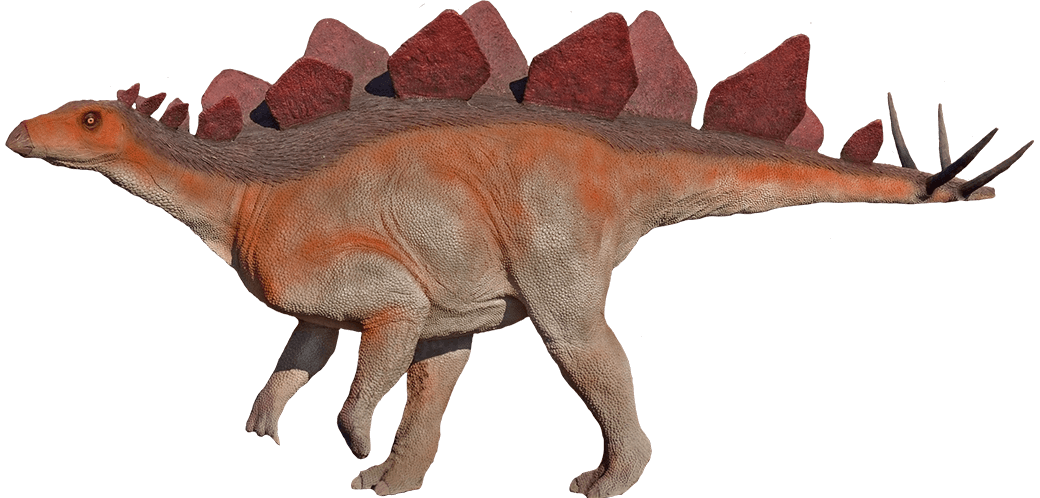Spring has sprung!
Spring Deals: Save 50% on memberships with code: SPRING
We are open 6 days a week from 10am to 6pm, with last entry 5pm! Closed Wednesdays!
(Please check our social media pages @moabgiants for discounts, offers and more!)
Thank you all for your support!
Trackmaker of the Stegopodus footprint

Diet : Herbivorus
Habitat : Forest areas, often near the river channels
Length : 14.5-20 feet (4.4-6 meters)
Weight : About 1,760-3,900 lb (800-1,800 kg)
A distinctive specimen of this kind of footprints was found in Morrison Formation near the Moab airport and described by M. Lockley and A. Hunt, in 1998. But independently, Morrison Formation rocks, in the famous Cleveland-Lloyd Dinosaur Quarry, in Utah, revealed several similar large, three-toed footprints made by bipeds. Ten years later they were described in detail by G. Gierliński and K. Sabath. They are stegosaurian tracks, but different from some other Deltapodus-like stegosaur hind footprints. This then possible to suppose that those footprints named Stegopodus were made by a light built and then possibly bipedal stegosaurians like Hesperosaurus.
The Late Jurassic Hesperosaurus means “western lizard” is known from Morrison Formation of Wyoming. This is stegosaur with a short, wide head, oval-shaped plates and caudal spikes similar to those of Stegosaurus. It was discovered by Patrick McSherry in 1985. The skull was intermediate between Stegosaurus and Huayangosaurus. Stegosaurs first appeared in Asia during the Middle to Late Jurassic, then crossed over to North America a few million years later. That would explain the relatively evolved appearance of one of the first North American stegosaurs, Hesperosaurus.
© 2017 Moab Giants. All Rights Reserved | Site & Utah Search Engine Marketing by Red Olive